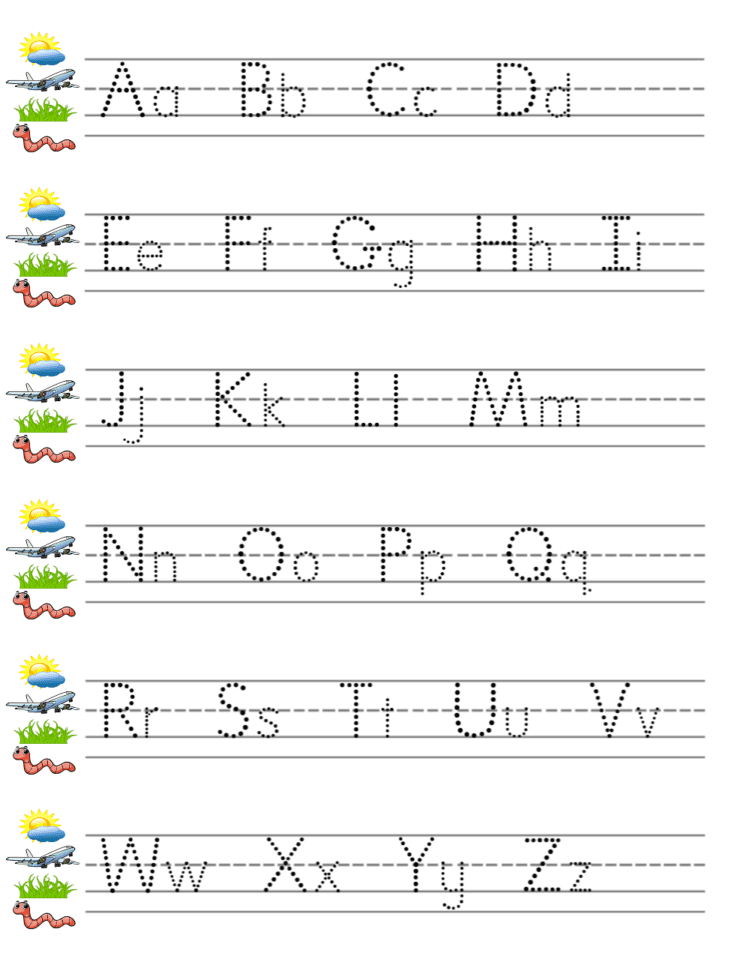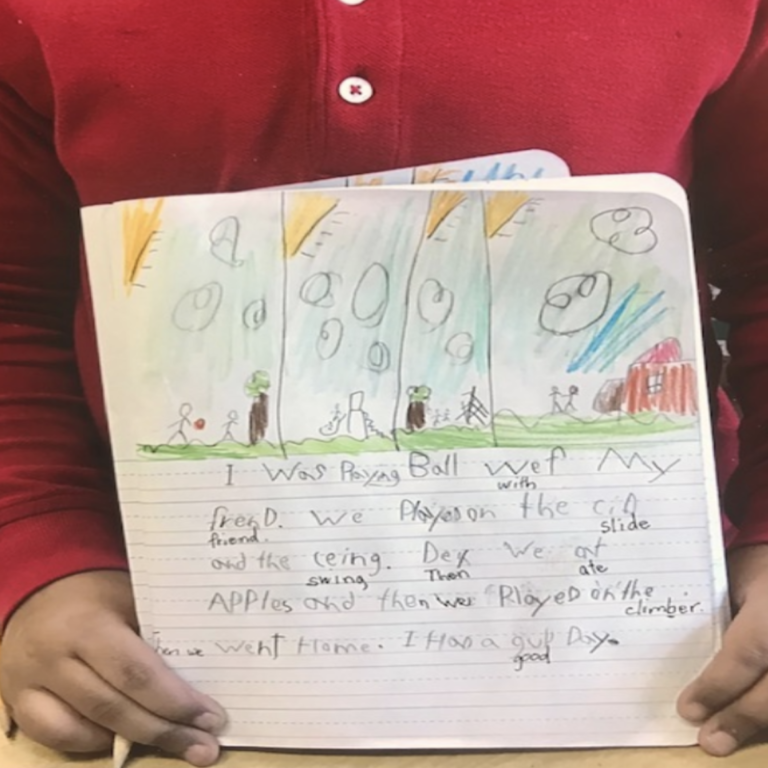- Home
- Ms. Charlton's Class
- Writing
Kindergarten Team
Page Navigation
Letter Formation
-
In the bgeinning of the school year, your child will learn how to form letters onto paper. They will learn the "sky line" "plane line" "grass line" and "worm line" to help them form the letter.
Here is an example of the different lines that your child will learn about.

Kid Writing
-
Kid Writing is the type writing that your child will practice using in Kindergarten. Kid Writing is a systematic approach to effective writing. There are 4 steps your child will follow when writing in their writing journals.
Step 1: Draw your story/Draw your information.
Before actually writing, your child will draw out what they want to write about. They can then use that drawing to help them build sentences and will help them remember what they want to say. The srawings will also help me as the teacher guide your child into the right direction when writing. I may ask your child "Can you tell me more about this?" "What is happening in the picture you drew?" ' Does your writing match the picture you drew?" to help guide them.
Step 2: Kid Writing
In the beginning of the school year. Your child's kid writing might be just a word or phrase that matches their drawing. As your child goes through the Kindergarten program, they will be able to add more sentences and eventually write on their own. I like to take away the pressure of writing perfection in my classroom, so I will tell students that kid writing is different then adult writing. This gives them room to sound out words and spell them incorrectly. We also use a "magic line" to hold the place of a word that they can't figure out how to spell. I like to encourage the student to take the lead in their writing, not worrying about the perfection of writing and praising them whenever I see something that they can do.
Step 3: Adult Writing
After the student writes their sentence or story. An adult will "under write" the student's work by writing the correct way to spell a word underneath of the version that they wrote. Rather than crossing out the child's work, the adult writing can just exist as another layer of work on the paper. This helps the student see the difference in the way they spelled a word and the way an adult would spell it.
Step 4: Sharing!
I believe writing to be a form of expression that is meant to be shared! Your child will have a writing journal that they will keep their writing in. They will have the opportunity to share their work with the whole class, their table groups, or me in a one-on-one conference. Having a student share their work helps them practice their reading skills as well as review writing concepts. When your child completes a writing journal, they will be able to take it home to share with their family.
Here is an example of Kid Writing.


